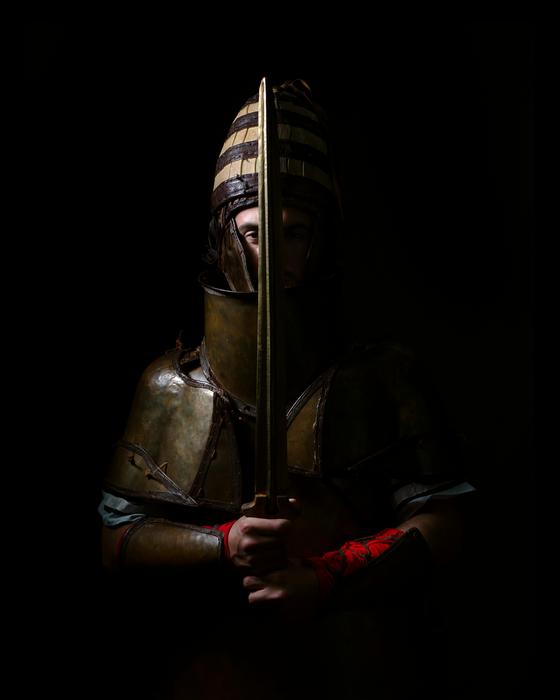A 3,500-year-old suit of Mycenaean armour may have been used in battle – and not just for ceremonial purposes as previously thought – new research reveals.

Credit: Andreas Flouris and Marija Marković.
A 3,500-year-old suit of Mycenaean armour may have been used in battle – and not just for ceremonial purposes as previously thought – new research reveals.
Researchers worked with a group of Greek military volunteers who wore a replica of the Dendra armour during extended simulations of the rigours of battle.
One of the best and most complete examples of Mycenaean-era full-body armour, the bronze panoply was discovered in a tomb in the Greek village of Dendra, by Greek and Swedish archaeologists in the 1960s. But since its discovery, the question has remained as to whether the armour was purely for ceremonial purposes, or for use in battle.
This question has limited historians’ and academics’ understanding of ancient warfare and its consequences, which underpinned the social transformation of the prehistoric world.
But now, new research from an international team of researchers, published in PLOS ONE, has found that the armour was suitable for active warfare, providing new insights into war in the Late Bronze Age.
The research team conducted human experiments with a metal replica of the armour, which was created in the 1980s by staff and students at the former Bournville College of Art in Birmingham, UK at the invitation of the late Diana Wardle. A group of Greek special armed forces personnel wearing the replica armour completed an 11-hour simulation of Late Bronze Age combat protocols based on details from Homer’s Iliad.
Professor Andreas Flouris, from the University of Thessaly, who led the research said: “The armour that our volunteers wore was the same dimensions and similar weight to the Bronze Age original. We also monitored calorie intake based on a ‘Homeric diet’ (about 4,443 calories) derived from relevant descriptions found in the Iliad, and calorie expenditure together with the stresses placed on the volunteers’ bodies under temperatures typical for a Greek summer of 30-36 degrees Celsius. When the 11-hour battle protocol began we measured heart rate, oxygen consumption, core temperature, fluid loss, and muscular function.
“We found that the armour allowed full flexibility of movement and did not exert excessive physiological stress on the body. This means that despite earlier views which classified it as only a ceremonial outfit, the armour could be worn for extended periods by fit individuals in battle. Sixty years on from the discovery of the Dendra armour we now understand, despite its cumbersome appearance at first sight, that it is not only flexible enough to permit almost every movement of a warrior on foot but also resilient enough to protect the wearer from most blows.”
The findings add much-needed detail to contemporary historical records of armour found in Greece and Egypt – records such as numerous sketches of armour on Linear B tablets (syllabic script used for writing Mycenaean Greek) found at Knossos in Crete, as well as illustrations of Mycenaean warriors on Egyptian papyrus.
The researchers argue that findings from these experiments show that the Mycenaeans had such a powerful impact in the Eastern Mediterranean in part because of their armour technology.
Dr Ken Wardle, Senior Lecturer in Classics, Ancient History and Archaeology at the University of Birmingham who collaborated on the study, explained: “Hittite records of military interactions with the Ahhiyawa, another name for the Mycenaeans, show that they had a substantial presence in western Asia Minor in the second half of the 2nd Millennium BC. Given that the Hittite kingdom dominated most of Anatolia and, at times, the northern parts of Syria and Mesopotamia we must understand that only a significant military force could oppose them or gain such respect as recorded in the Hittite archives.
“Descriptions of bronze armour used in the Iliad were thought to be later interpolations or poetic license, but this research suggests otherwise. Viewing the armour in light of these historical records, knowing that it is possible it was used in battle, helps to shed much-needed light on one of history’s most momentous turning points: the collapse of the Eastern Mediterranean Bronze Age civilisations towards the end of the 2nd Millennium BC; a time of destruction and upheaval that marked the beginning of the Age of Iron.”
ENDS
Journal
PLoS ONE
Method of Research
Experimental study
Subject of Research
People
Article Publication Date
22-May-2024



